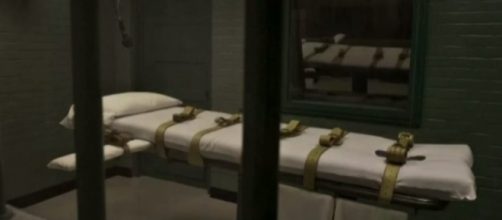Ohio is set to execute 43-year-old Ronald Phillips on July 26. Phillips received the death sentence following his conviction for raping and murdering the 3-year-old daughter of his girlfriend in 1993. He is scheduled for the state’s first execution since January 16, 2014, when it took 26 minutes to execute Dennis McQuire as he struggled for life – gasping, seizing, and snorting.
Shortly before McQuire’s scheduled execution date, drug manufacturers banned Pentobarbital for administering in the process of carrying out the looming death penalty. As an effect and as a different drug in the mix for execution, Ohio Department of Rehabilitation and Corrections (DRC) administered a cocktail using Midazolam instead of Pentobarbital.
The lethal injection of McQuire included a barbiturate, short-acting, of course, to ensure he was unconscious before injecting him with a heart-stopping, paralytic combination of the sedative Midazolam and Hydromorphone, an opioid pain medication. Phillips is slated to have the same drug-cocktail administered as McQuire encountered.
Death penalty opponents want to stop Phillips’ execution
Reverend Lynda Smith, retired United Church of Christ pastor, is among approximately 12 people who converged outside the building housing Ohio Governor John Kasich’s office. They held signs to effect giving him their message to end executions in the state.
According to Smith, Caucasians who are wealthy end up on death row far less than other races with less economic stature.
If the United States Supreme Court does not halt the execution process, Phillips will die in a week. He will be transferred to Ohio’s death house at Southern Ohio Correctional Facility 24 hours before his execution. A three-member execution team will monitor him. The condemned inmate will have an opportunity to visit with spiritual advisers and with family members. Additionally, there is the formality of medical professionals evaluating his veins in preparation for inserting lines intravenously so that the lethal injection cocktail can be administered and kill him.
Phillips is begging for mercy, according to the Portsmouth Daily Times. He’s hoping that his date with death is, once again, delayed while the challenge of the lethal injection protocol continues.
July 26 marks the seventh time Phillips has been scheduled to die.
Ohio plans more executions for 2017
After Phillips’ death penalty is exacted, three additional executions are on Ohio’s calendar for 2017 — in September, October, and November. JoEllen Smith, spokeswoman for the DRC assured that all the steps, mandated for Ohio’s execution protocol, have been “complied with” as the state prepares for Phillips’ execution.
If his death sentence is achieved, Ohio will be second to Arkansas in resuming executions this year following a lull. In April, Arkansas attracted attention internationally by successfully executing its first inmate since 2005.
Rather than commence executions in the cloak of darkness compared to most, which happens in isolation and at night, Arkansas created a tight execution schedule, planning eight deaths over 11 days.
Some of the execution drugs were about to expire without a guarantee that more would be available. The state said its scheduling was “necessary.” Four of the eight executions were completed. The additional four were delayed.
Of the six states that have executed inmates to date this year, Arkansas accounts for more than 25 percent. With Phillips’ execution on the horizon, Ohio is set to become the seventh state to carry out executions. In 2016, only five states executed 20 condemned inmates.


